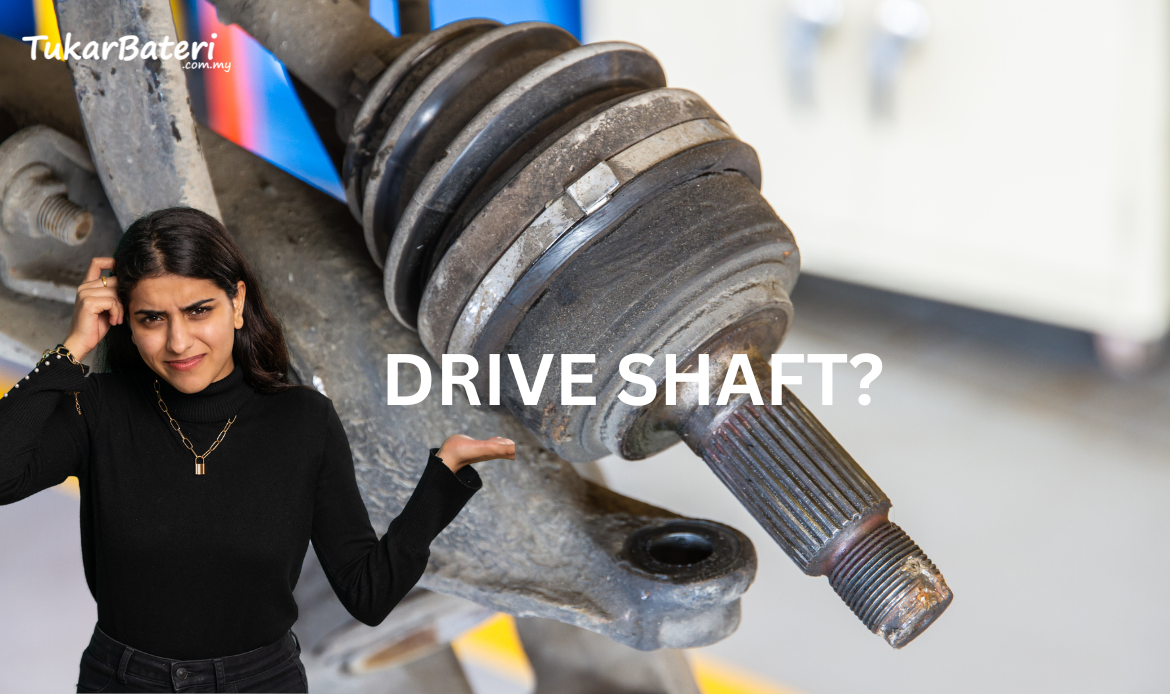Drive Shaft: A Small Part but Super Important for Your Car!
Okay, have you ever heard about the Drive Shaft? If not, don’t worry! It’s not exactly the car part that most of us think about. But trust me, the Drive Shaft plays a huge role in ensuring your car runs smoothly.
In fact, if your Drive Shaft is damaged, you’ll notice the difference when you’re driving. So, let’s chat a bit about what a Drive Shaft is, why it’s important, the signs that it’s faulty, and what could happen if you ignore the problem.
What Exactly Is a Drive Shaft?
Alright, the Drive Shaft is a metal rod connecting your car’s engine to the front or rear wheels, depending on your car type. Its job? It transfers power from the engine to the wheels so that your car can spin and move. In other words, the Drive Shaft is like a power bridge between the engine and the wheels.
No matter how powerful your engine is, your car won’t move an inch without the Drive Shaft. So yes, it might be a small and hidden part, but it’s super important!
Factors That Affect Drive Shaft Lifespan
1. Driving Conditions
- Rough Roads: If you often drive on bumpy or uneven roads, your Drive Shaft takes extra stress, wearing it out faster.
- High Speeds: Regularly driving fast puts more pressure on the Drive Shaft, especially in powerful cars.
- Stop-and-Go Traffic: Constant acceleration and braking in city driving can cause the Drive Shaft to wear out more quickly.
2. Vehicle Load
- Heavy Vehicles: Trucks, SUVs, or vehicles used to tow heavy loads experience more strain on their Drive Shafts, which can shorten their lifespan.
- Modifications: Adding performance parts or boosting engine power without upgrading the Drive Shaft can cause it to wear out faster.
3. Worn Joints
- Universal Joints (U-Joints): These connect the Drive Shaft to the wheels and transmission. Over time, they wear out, especially if they lack proper lubrication.
- CV Joints: If the protective boots around these joints crack, dirt and moisture can get in, causing faster wear.
4. Maintenance
- Lack of Lubrication: Regular lubrication and inspections are important. Neglecting these can lead to premature wear and tear on the Drive Shaft.
- Broken Seals: Damaged seals can let in dirt and moisture, which speeds up corrosion.
5. Road Hazards
Potholes & Bumps: Hitting potholes or curbs can damage or misalign the Drive Shaft.
Off-Roading: Rough terrain puts more pressure on the Drive Shaft, increasing the chance of damage.
6. Corrosion
- Salt & Moisture: Living in areas with salty roads or high humidity increases the risk of rust, which can weaken the Drive Shaft over time.
7. Vehicle Modifications
- Lifted or Lowered Suspension: Modifying your suspension without adjusting the Drive Shaft can put extra strain on it.
8. Quality of Parts
- Material: High-quality Drive Shafts made from strong materials like carbon fiber or steel will last longer.
- Defects: Occasionally, a Drive Shaft may have a factory defect that causes early failure.
In short: How you drive, maintain your vehicle, and even where you live can all impact how long your Drive Shaft lasts. Regular checks and proper care can keep it in good condition and help avoid costly repairs down the line. Stay proactive, and your Drive Shaft will keep your car moving smoothly!
Signs of Drive Shaft Having Issue
So, how do you know if your Drive Shaft has a problem? Here are a few signs to watch out for:
- Clicking Noise When Turning – If you hear a clicking noise when you’re making a turn or doing a U-turn, there’s a high chance your Drive Shaft is “screaming” for attention. This sound usually comes from a worn-out joint.
- Vibration While Driving – If you feel your steering wheel or car vibrating a lot when driving, especially when accelerating, this could be a sign of an unbalanced or damaged Drive Shaft. The longer you leave it, the worse the vibration gets.
- Knocking Sound When Accelerating – If you hear a knocking sound when pressing the gas, particularly when starting to move, this is another warning sign that your Drive Shaft is having issues. Don’t ignore it!
- Wheels Feel Like They’re ‘Stuck’ – If your front or rear wheels feel like they’re sticking or getting stuck while driving, there’s a chance the Drive Shaft is seriously damaged. This can be dangerous because it could cause you to lose control of the car.
What Happens If You Don’t Fix a Faulty Drive Shaft?
Don’t take it lightly if you notice any of the signs above. If the Drive Shaft is damaged and you don’t fix it, here’s what could happen:
- Risk of Wheels Getting Stuck – A badly damaged Drive Shaft can suddenly cause your wheels to get stuck. Imagine you’re driving fast, and suddenly the wheels stop moving. Scary, right?
- Serious Engine Damage – If the Drive Shaft is damaged for too long, it can stress the engine and other components. This could lead to more severe damage, and repair costs will skyrocket.
- Unstable Driving – If the Drive Shaft is out of balance, your car’s driving stability will be affected. This is very dangerous, especially if you’re driving at high speeds.
Diagnostic Tests for Drive Shaft Issues
Drive Shaft Replacement Process
Conclusion
Even though the Drive Shaft isn’t a part of the car you often see or think about, ensuring your vehicle runs smoothly is super important. So, if you start hearing weird noises, feeling vibrations, or noticing anything unusual while driving, don’t ignore it. Get it checked ASAP! It’s better to repair or replace it early than to wait until your car breaks down and has to be towed to the workshop.
Take care of your car, and it’ll take care of you. Drive safe!

